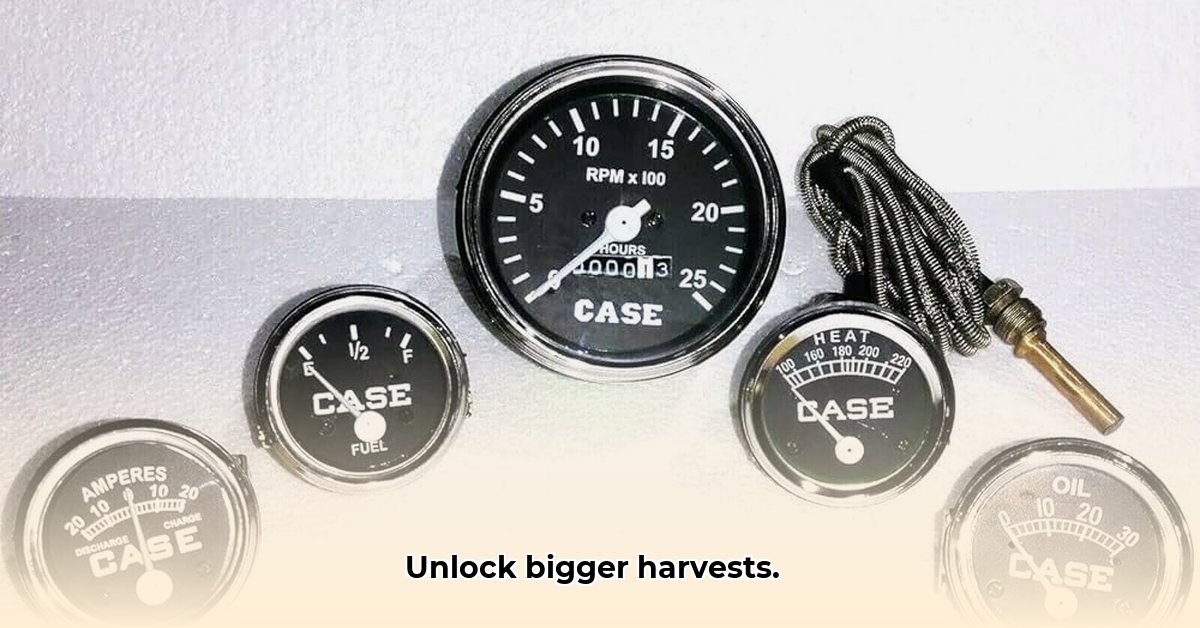
Accurate rainfall data is crucial for efficient irrigation and maximizing crop yields. This guide empowers you to select, install, and utilize rain gauges from Tractor Supply to optimize your farming practices and boost your bottom line. We'll cover everything from choosing the right gauge to interpreting the data and integrating it into your overall farm management strategy.
Choosing the Right Rain Gauge: A Farmer's Guide
Tractor Supply offers a range of rain gauges, each designed for different needs. Understanding the key differences will help you select the perfect tool for your farm.
Types of Rain Gauges
Non-recording Rain Gauges: These simple, affordable gauges directly measure rainfall accumulation at a specific point in time. They're ideal for basic monitoring and provide a quick snapshot of rainfall. Think of them as the standard measuring cup for precipitation.
Recording Rain Gauges: These gauges automatically record rainfall over time, often offering data logging capabilities or wireless transmission options. They're perfect for detailed analysis, identifying trends, and making informed irrigation decisions. This advanced technology allows for a continuous record of rainfall patterns.
Key Considerations for Gauge Selection
Selecting the right rain gauge involves careful consideration of several critical factors:
| Feature | Importance |
|---|---|
| Accuracy | The precision of rainfall measurement. High accuracy is crucial for reliable irrigation management. |
| Durability | The gauge's ability to withstand harsh weather conditions. Look for weather-resistant materials. |
| Ease of Use | Simple setup, reading, and maintenance save you valuable time and effort. |
| Data Logging | Automatic recording and storage of rainfall data streamline analysis and decision-making. |
| Budget | Rain gauges vary in price; setting a budget helps you narrow down your choices. |
Setting Up Your Rain Gauge for Optimal Performance
Placement and maintenance are key to ensuring accurate rainfall data. Follow these steps for optimal results:
Site Selection: Choose a flat, open area away from trees, buildings, or other obstructions that could interfere with rainfall collection. A clear, unobstructed view of the sky is crucial.
Secure Installation: Ensure the gauge is firmly planted or mounted to prevent movement which can skew your readings. Stability is essential for accurate measurements.
Regular Maintenance: Regularly clean the gauge to remove leaves, debris, or any other obstructions that might impact its accuracy. Consistent cleaning is vital for reliable data.
Understanding Your Rainfall Data: Actionable Insights
Your rainfall data provides valuable insights for informed decision-making.
Identify Rainfall Patterns: Track rainfall over time to identify trends and seasonal variations. Consistent monitoring is essential for recognizing long-term patterns. This data is crucial for effective planning.
Optimize Irrigation: Use rainfall data to schedule irrigation efficiently, preventing both overwatering and underwatering. This method optimizes water resource usage.
Improve Crop Management: Rainfall data affects planting schedules, fertilization, and pest control strategies. Accurate data leads to more informed, timely decisions.
Rain Gauge Data and Your Overall Farming Strategy
Integrating rain gauge data into your overall farm management strategy is crucial for maximizing efficiency and profitability.
Combine with Soil Moisture Sensors: Using rain gauge data alongside soil moisture sensors provides a holistic understanding of your field's water needs. This combined approach allows for a more comprehensive assessment.
Improve Predictive Modeling: Rainfall data can be integrated into advanced models to predict future crop yields, leading to improved resource management and potentially increased profits. This data-driven approach enhances your farm's overall efficiency.
In Conclusion: Rain gauges from Tractor Supply are simple yet powerful tools that provide valuable data to boost yields and optimize your farm's efficiency. By following these guidelines, you'll be well-equipped to make informed decisions leading to a successful harvest. Don't underestimate the power of simple, accurate data collection in the pursuit of robust and sustainable farming practices.